In this blog post I will show you how to modify a knitting pattern for a different yarn weight. Since I have gotten quite a few questions about this topic lately, I feel like this is a subject worth exploring in a dedicated blog post.
This post contains affiliate links. I may earn a small commission if you use these links, at no cost to you. As an Amazon Associate I earn from qualifying purchases. I only recommend products that I find value in myself. See my full disclosure here. Thank you for your support!
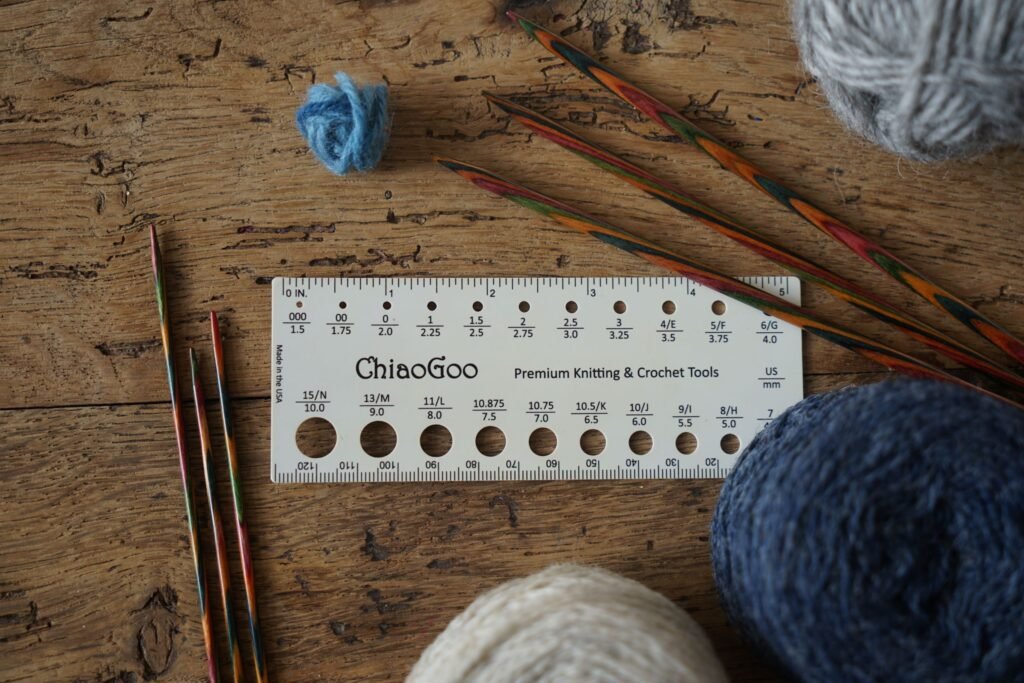
The question of how to modify a knitting pattern if you choose to use a different yarn than the one indicated in the pattern, is relevant for all kinds of knitting patterns. Whether it is a a garment, hat or other accessory pattern, you can adjust it to your needs. And we will discuss this topic in general down below. However, I would like to specifically focus on modifying sock knitting patterns for different yarn weights.
As you might know, I have an Etsy shop where I sell my naturally dyed yarns. As of right now, I offer two different sock yarn bases which are both DK weight. Most sock knitting patterns, however, are written for fingering weight yarns. For reference, fingering weight yarns have a yardage of about 360 – 480 yards per 100g [1]. Whereas DK weight yarns have a yardage of about 220 – 280 yards per 100g [2].
Does this mean that you are limited to choosing a sock knitting pattern that was written for DK weight yarn? Of course not. You can adapt any knitting pattern and make it work for the yarn of your choice. You simply need to do some calculations or make changes to the needle size you use.
Making a Gauge Swatch
What is the first thing you should do in order to be able to choose how to make the knitting pattern work for you, is to make a gauge swatch. And to take it one step further, this swatch should ideally be knitted under the same conditions as indicated in the pattern. In a sock knitting pattern, for example, the gauge is usually measured in pattern and in the round over 4 in or 10 cm, after blocking. Although a bit more time consuming, I highly suggested that you make the effort to knit such a swatch. It will save you from frustration and potentially unraveling and having to start over.

Now that you knitted your swatch and blocked it, it is time to measure the gauge. After that, let’s have a look at how to proceed with the gauge you got because you have different options on how to proceed.
How to Modify a Knitting Pattern for a Different Yarn Weight
#1 Changing the Needle Size
If your gauge doesn’t differ significantly from the one indicated in the pattern (only a handful of stitches), it can be worthwhile to experiment with different needle sizes. You have to be aware, however, that changing the needle size will affect the fabric you are creating. If you choose a smaller needle size, the fabric will be firmer. If you choose a larger needle size, the fabric will be looser. Going back to the sock knitting pattern example, using a smaller needle and hence creating a tighter fabric can be a good thing because a firm fabric tends to last longer. When knitting a cardigan, however, this might not be so favorable.
#2 Changing the Pattern Size
The other option you have is to simply follow the instructions for a different pattern size. Let’s have a look at an example.
When I knit socks for my husband, I go for a size L which usually means that I have to cast on 72 stitches. Let’s say that the gauge indicated in the pattern for a fingering weight yarn is 36 sts for 4 in / 10 cm. Casting on 64 stitches will therefore result in a width of 8 in / 20 cm (4/36*64 = x). If I want to knit this pattern with a DK weight instead of a fingering weight yarn, I have a look at the gauge. Let’s say my gauge is 30 sts for 4 in / 10 cm. Calculating backwards, in order to get a width of 8 in / 20 cm, I will need to cast on 60 sts (30/4*20 = x). Therefore, I can simply cast on a smaller pattern size to get the right sock size dimensions.
#3 Recalculating the Pattern
I admit, the example above was fairly easy because you can simply follow the instructions for a different size which is already part of the pattern. But what about the cases where the difference in gauge is so large that you don’t have this option? It is possible, as well, but it requires you to recalculate every step of the pattern. But after all, all you have to do is use the rule of three I showed you above and it usually works out just fine.
Sock Knitting Pattern Specifics
Pattern Repeat
When it comes to sock knitting patterns, though, there are a few specifics that you should be aware of. Sock knitting patterns are usually written in a way that you need a stitch count that is divisible by four (e.g. 56, 60, 64 stitches). If you apply the rule of three and get a number that is not divisible by four, you can simply round up or down.
Heel Flap and Gusset
And if you have a classic heel flap and gusset construction, you also need to pay attention to the heel turn.
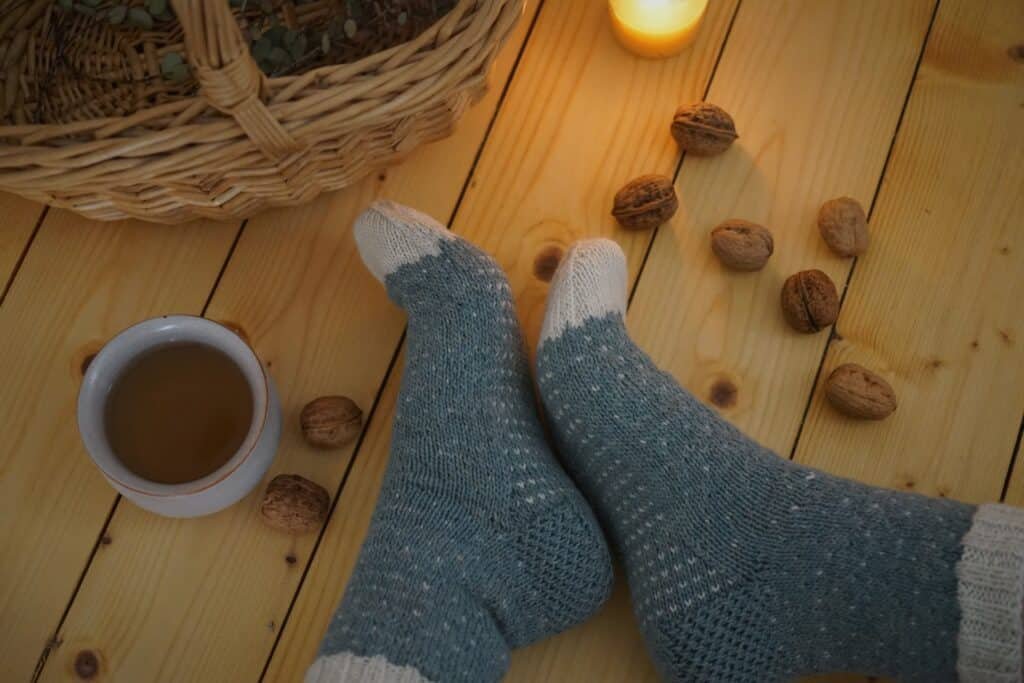
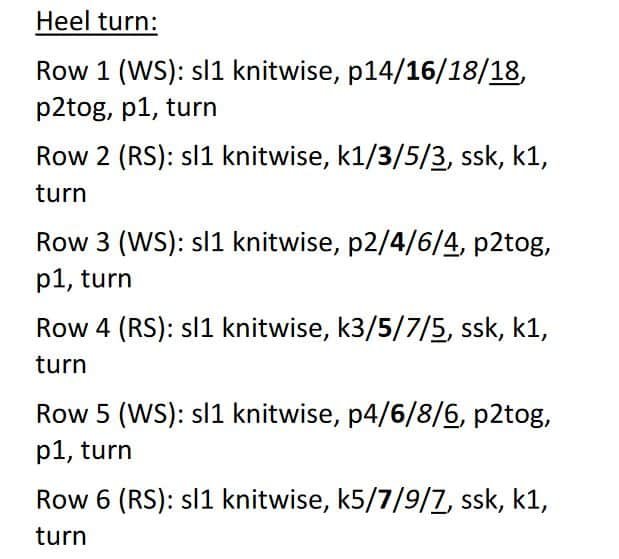
This is a section of my Schneeflöckchen Socks knitting pattern. The stitch count for the four sizes is 60, 64, 68 and 72 stitches. Let’s say you chose to knit the pattern with a stitch count of 52 stitches. What do you do about the heel turn? Taking a look at the smallest size, you notice that you have to sl1, purl 14 stitches, p2tog, p1 and turn. Therefore all you have to do is take a fourth of your stitches and subtract one stitch. Taking the stitch count example of 52 stitches, this means you have to sl1, purl 12 stitches, p2tog, p1 and turn (52/4-1 = x).
But how about the next row? Well, you want to create a symmetrical heel turn. In the first row of the heel turn, you worked 16 sts before you turned your work. This means that 10 sts remained un-knitted (because the heel is knitted with only half of the stitches). This is because you knit the heel with only half of your stitches (52/2-16 = 10). Now you know that you will have to work 6 stitches in this row so that you have 10 sts remaining on the needle after you turn your work. Thus, you have to sl1, knit 2 stitches, ssk, k1, turn.
I hope you got the general idea. It is not complicated once you have wrapped your head around it.
Modified Knitting Projects Examples
I actually knit with different yarn weights than the ones indicated in the pattern all the time. Here are a few examples to show you that it is totally possible to choose a completely different yarn than the one used in the pattern sample.

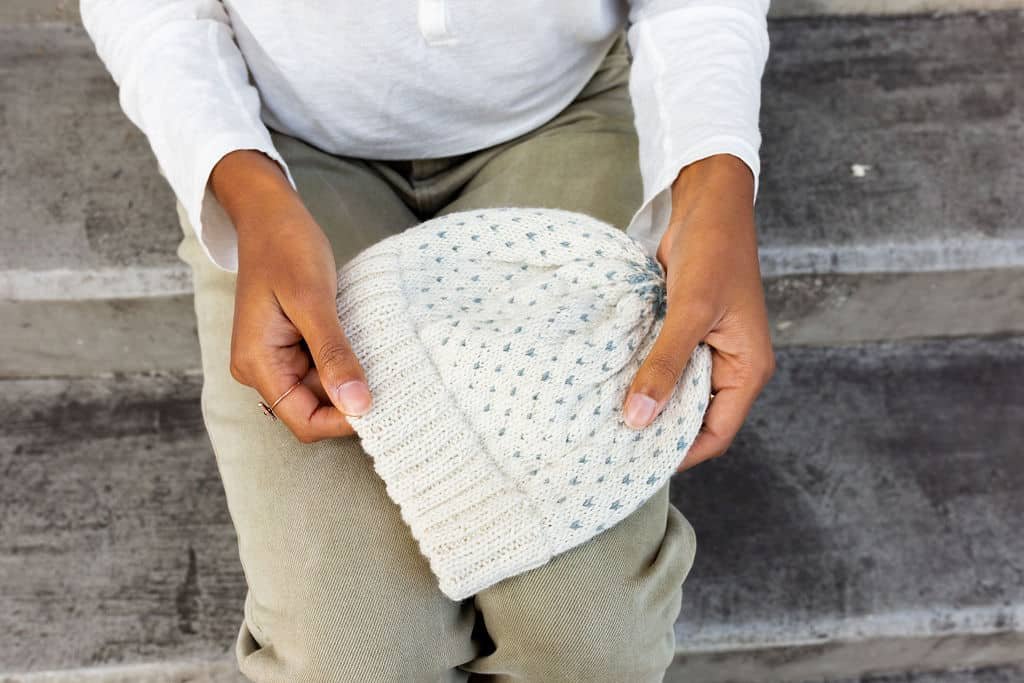
For this hat, I took my Schneeflöckchen hat pattern (written for a DK weight yarn) and used an aran weight yarn to knit the red hat in the left picture. I changed the stitch count to compensate for the different gauge.
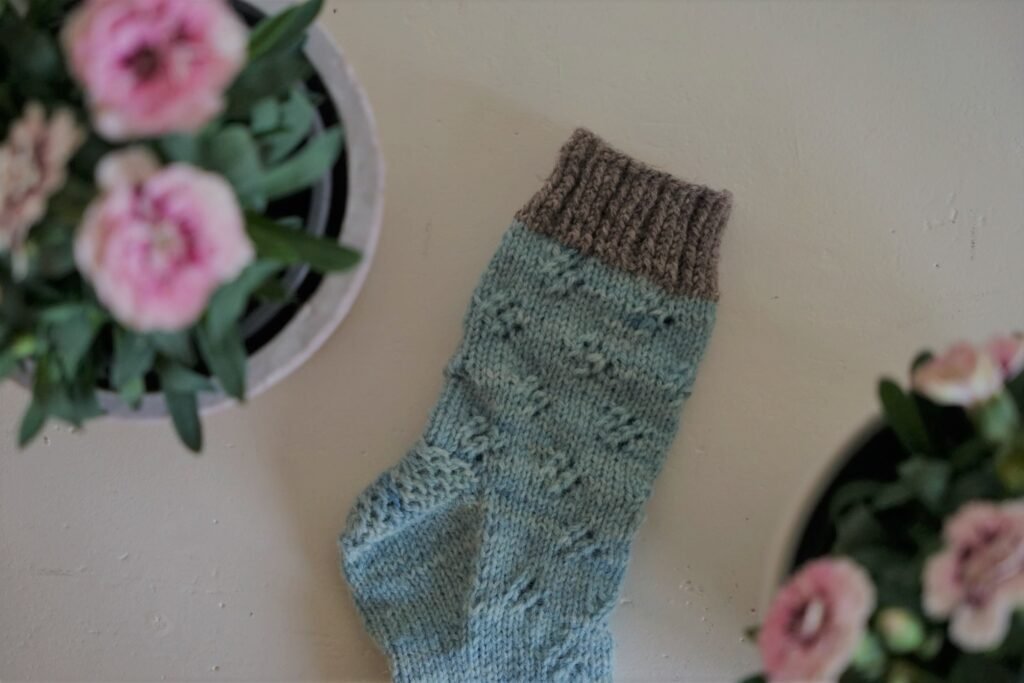
This sock pattern is written for a fingering weight yarn. I used my Classic Sock DK base which is much thicker (yardage 250 m / 100 g). To compensate for the different yarn weight, I cast on only 48 stitches instead of the 56 stitches indicated in the pattern instructions.
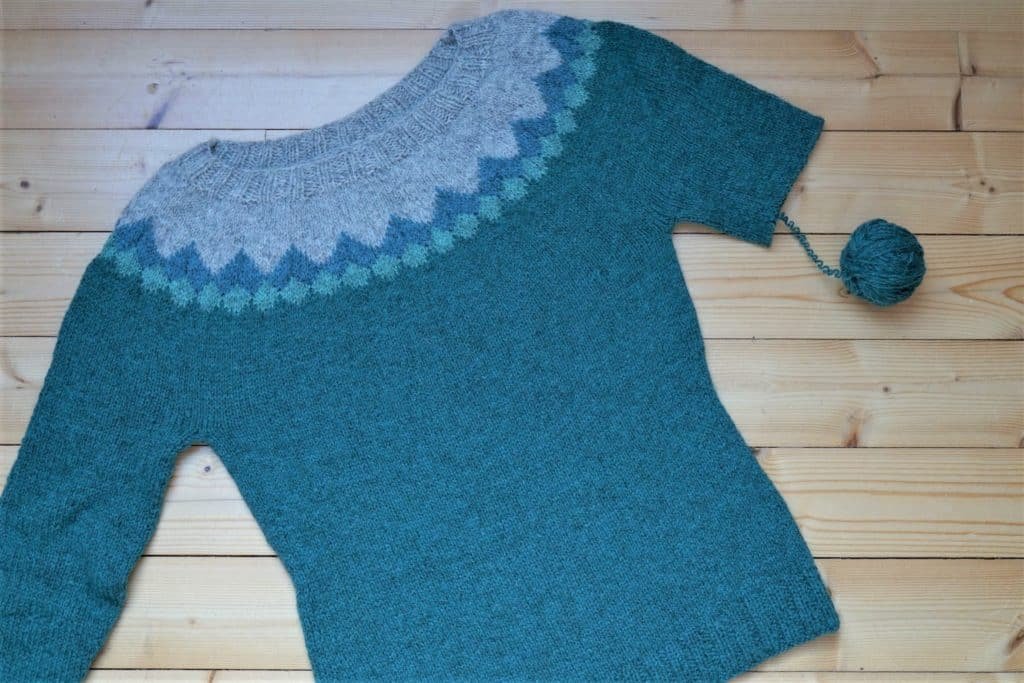
And in this last example, I used a DK weight yarn to knit this sweater pattern that was written for a worsted weight yarn. This was a bit more elaborate, because I had to rework the math of the pattern completely in order to create a sweater that fit me.
Looking for even more knitting content? Check out my Knitting Podcast on Youtube.
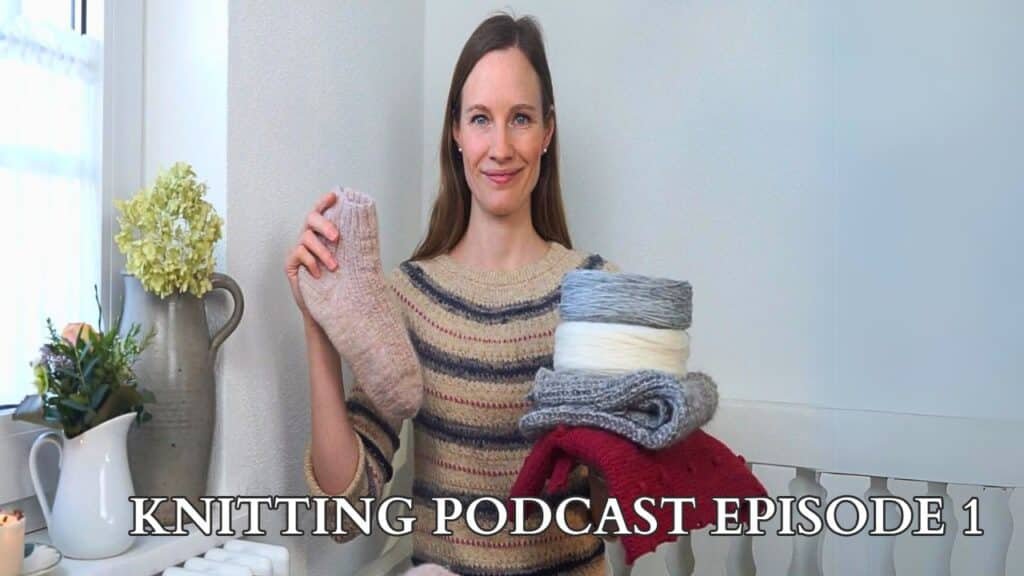
Do you want to learn how to knit sturdy, long-lasting socks?
In this free guide I share 7 expert tips on knitting sturdy socks with plastic-free, all natural sock yarn.

Tools I Use:
Chiaogoo Twist Interchangeable Needle Set (metal circular needles)
Knitter’s Pride Dreamz DPN Set (wooden dpns, mine are very old and hence look a bit different)
Amish Style Swift (I prefer this wooden version of a swift)
Knitter’s Pride Ball Winder (I prefer this wooden version of a ball winder)
Abbreviations
| k | knit |
| p | purl |
| p2tog | purl 2 stitches together |
| sl1 | slip one stitch |
| ssk | slip, slip, knit slipped stitches together |
| sts | stitches |

Pin It For Later: How to Modify a Knitting Pattern for a Different Yarn Weight
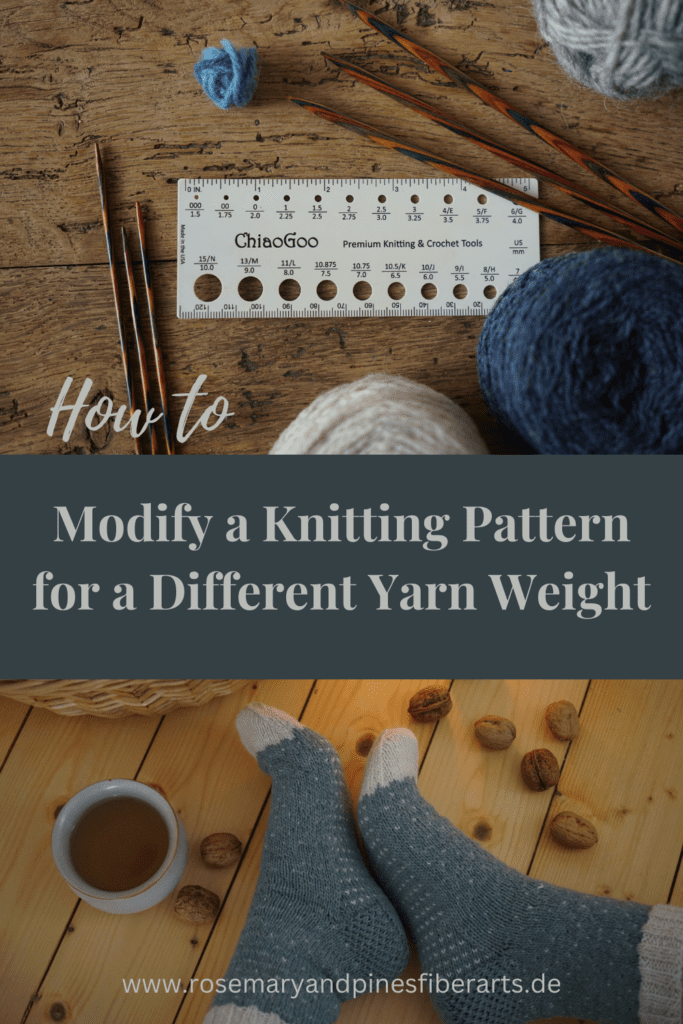
References: How to Modify a Knitting Pattern for a Different Yarn Weight
[1] https://nimble-needles.com/wool-and-tools/what-is-fingering-weight-yarn/
[2] https://nimble-needles.com/wool-and-tools/what-is-double-knitting-yarn-dk-weight-yarn/


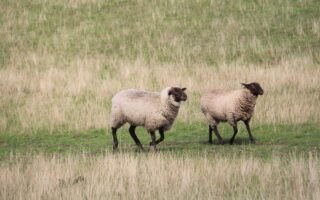
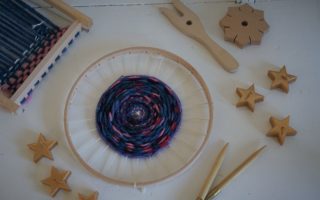
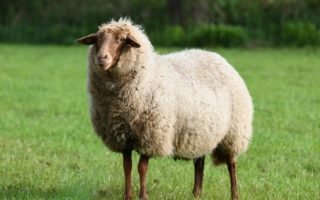
Hello. I hope you can help me. I have an Aran pattern jumper for DK but I want to use Aran wool, how do I convert it please. Is it better to use different needle size or convert the pattern size, I am not sure.
Thank you
Hi Marlene, You should definitely knit some swatches to figure out which route to choose.
If you use a different needle size, the knit fabric will have a different drape than what the designer of the pattern originally intended and you might not like that look. And since there is a significant difference between a DK and an aran weight, you might not be able to get gauge with switching the needle size.
Personally, I would knit a swatch with aran-appropriate needles and check the gauge. I would then compare the gauge with the gauge called for in the pattern and see if I could simply knit the pattern in a different size to fit my measurements. That would be the easiest option.
In the worst case, knitting a different size is not possible and you will have to recalculate the whole pattern. To do so, check the commonalities between the sizes of the pattern and see how many stitches they are apart from each other (for the cast on number). Then you can go up or down on the number of stitches in these increments to get the measurements you are looking for.
I hope this helps! Let me know if you have any further questions.